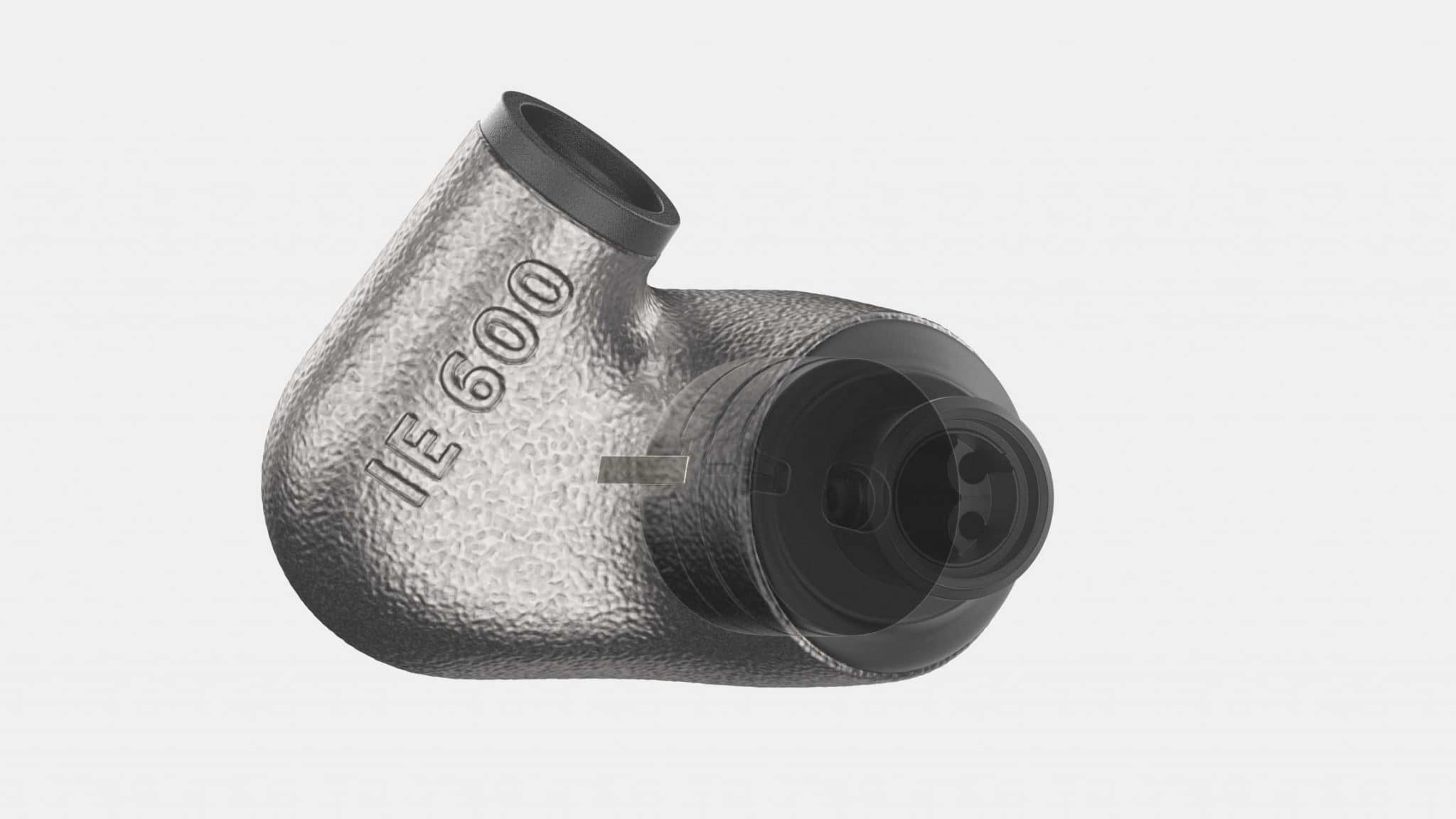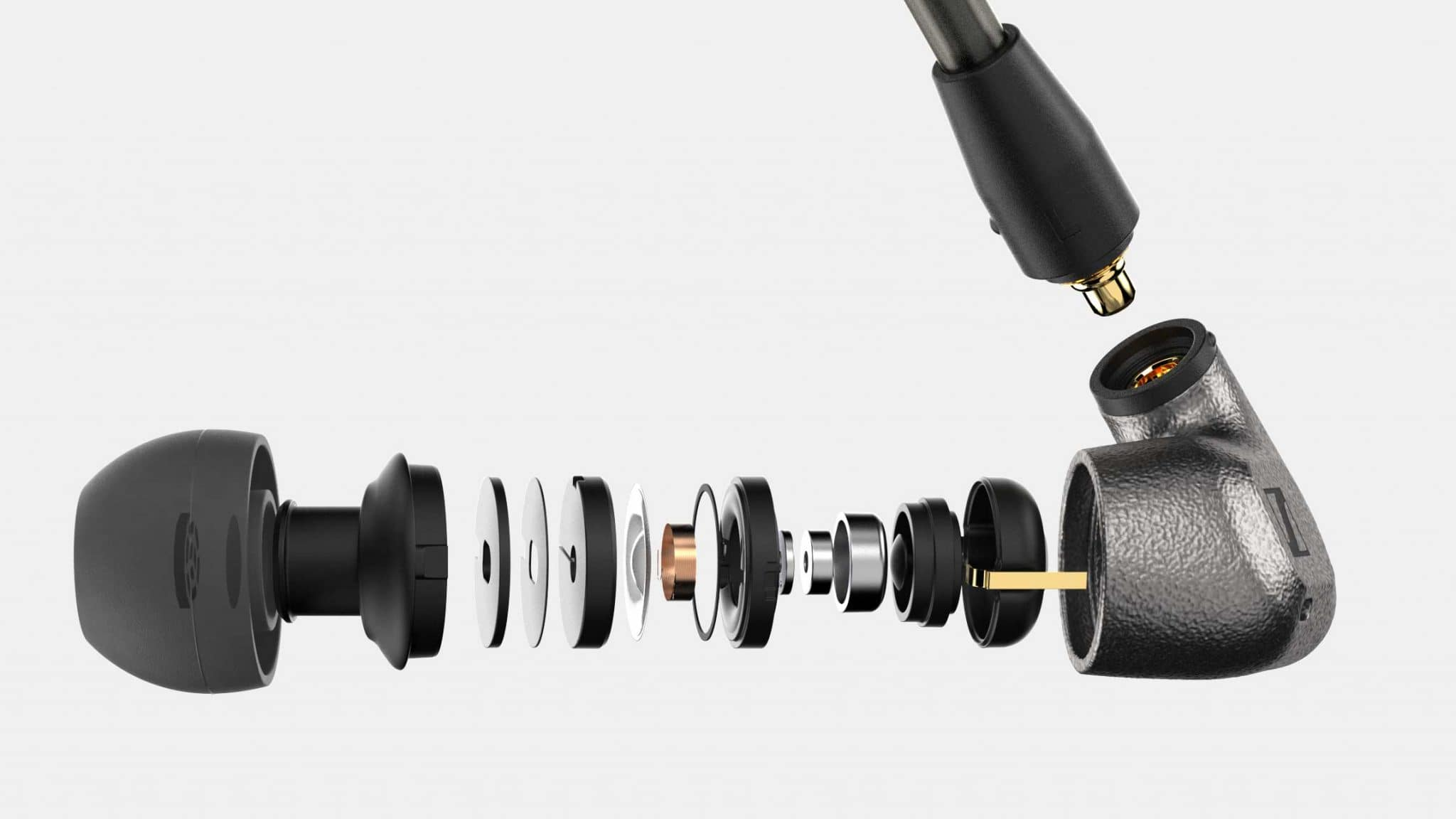Next March 8th, German high-end audio products brand Sennheiser is launching one of the most interesting 3D printed consumer products seen yet: the new Sennheiser IE 600. These 3D printed earphones will be integrating a housing serially additively manufactured on a Trumpf laser PBF system, using an amorphous zirconium from Heraeus, and then finished both automatically and by hand to achieve the perfect housing for the earphones’ transducer.
The Sennheiser IE 600 earphones are meant to demonstrate the lengths that Sennheiser will go to achieve beautiful sound. Each earphone is a masterpiece combining the hand-finished, 3D printed amorphous zirconium metal housing with high-end audio components developed and made by Sennheiser. Everything is manufactured to the strictest tolerances The balanced frequency response and extremely durable materials have been engineered to provide clear, natural voicing and a unique aesthetic that will retain its good looks for decades.
Stronger than steel, built to last
Researchers have worked for many years to perfect amorphous metals for manufacturing. The zirconium alloy from Heraeus Amloy Technologies used for the IE 600 has triple the hardness and flexural strength of high-performance steel. Shock-frozen during manufacturing, amorphous metals never have a chance to form a crystalline structure like conventional metals.
The result is a lustrous, satiny surface that is extraordinarily resistant to corrosion and scratches. The IE 600 housing is fabricated using metal-powder-based 3D printing to enable the product’s complex geometry within tight tolerances. Chambers and channels form as part of this additive manufacturing process with no milling required. However, cost does limit the potential applications of this new material. One of the only places you’ll find it — besides ultra-high-end products like the IE 600 — is in a drilling head developed by NASA for the prototype of an amorphous metal blade that could be used for cutting ice on Europa (along with other alloys) where extraordinary resilience in extreme conditions is required.
Production of the amorphous zirconium metal housing takes place in Germany and includes both automated and manual steps. A computer-controlled laser sinters a thin coat of metal powder, welding the molten alloy to the already hardened material beneath it. Layer by layer, the part builds up to its ultimate shape. A technician then removes any artifacts of the manufacturing process by hand. After a thorough cleaning, steel shot blasting, polishing, and sophisticated surface treatment, the housing assumes its final, extremely durable aesthetic. Even daily use leaves practically no evidence in the form of scratches or wear.
Tailored Sennheiser IE 600 sound
The fact that 3D printing is used in the production process is yet another demonstration of how reliable this technology is becoming for certain products. The IE 600 packs big sound into a small, ergonomic package. The gold-plated MMCX connectors are recessed in the housing for greater stability and guidance. They support cable diameters of 4.8 mm and smaller, allowing you to plug into a wide range of audio sources as well as hi-fi components with balanced outputs. Two different styles of earbud tips — silicone and memory foam — are provided in three sizes to establish a comfortable seal in any ear. Flexible, adjustable ear hooks further enhance long-lasting comfort.
The Sennheiser IE 600 3D printed earphones can reproduce not only notes but also the subtle scratch of bow on string, the faint chirp of fingers gliding to the next chord on the guitar. Neutral acoustic voicing brings music closer, making it more alive and vivid. Within this delicate balance, the IE 600 nevertheless was built to incorporate powerful yet fast and accurate low-end response. All those through the Sennheiser’s TrueResponse transducer, the single 7 mm driver responsible for the extra-wide frequency range and ultra-low distortion of the IE 600.
To achieve a natural sound reminiscent of the neutrality provided by high-end studio monitors, our engineers carefully tuned the acoustic back volume inside the nozzle of the IE 600. This voicing lends a presence and intimacy that brings listeners closer to the music, allowing them to discover new accents and details. However, arriving at this level of poise and naturalness was not without challenges. When similar sounds occur in a track simultaneously, for instance, it can become difficult for the human ear to resolve all the nuances. The IE 600 integrates dual two chamber absorbers (D2CA) which capture and attenuate these masking frequencies, revealing even the finest textures of your music.
Production of the amorphous metal housing takes place in Germany and includes both automated and manual steps. After the part is 3D printed by laser powder bed fusion in a Trumpf metal AM system, a technician then removes any artifacts of the manufacturing process by hand. After a thorough cleaning, steel shot blasting, polishing, and sophisticated surface treatment, the housing assumes its final, extremely durable aesthetic. Even daily use leaves practically no evidence in the form of scratches or wear.
* This article is reprinted from 3D Printing Media Network. If you are involved in infringement, please contact us to delete it.
Author: Davide Sher





Leave A Comment